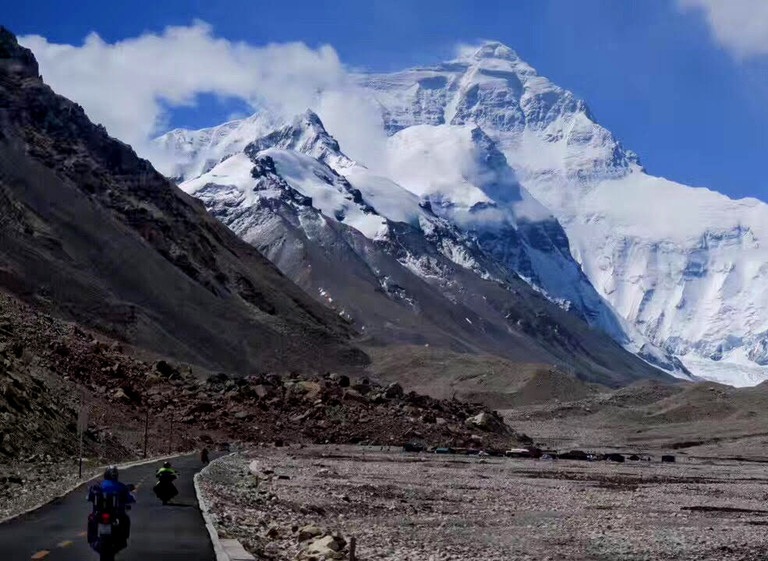About Us
The Central Valley Latino Mayors and Elected Officials Coalition (CVLEOC) is comprised of city and county elected officials from the eight diverse counties that make up the Central Valley: Kern, Kings, Fresno, Madera, Merced, San Joaquin, Stanislaus, and Tulare.
Founded in 2006, CVLEOC provides a forum for dialogue and action on critical issues facing the under-represented communities in our region. CVLEOC works to enhance protection and improve the economic, education, health, and social status of the those living in the San Joaquin Valley.
Members of the Latino and Elected Officials Coalition are deeply connected to decision makers throughout the Central Valley and statewide. The community elected officials that comprise CVLEOC proudly represent more than three million constituents throughout the Central Valley.
Issues
CVLEOC addresses issues specfic to the Central Valley.
Executive Board
Meet the Leadership of the Central Valley Latino Mayors & Elected Officals Coalition
Our Partners
Join with Latino elected officials throughout the Central Valley to discuss public policy and current issues.
Mission Statment
CVLEOC’s purpose is to provide a forum for dialogue and action on critical issues facing the under-represented communities in our region. CVLEOC works to enhance protection and improve the economic, education, health, and social status of the those living in the San Joaquin Valley.
Issues facing the Central Valley
Like all regions in California, there are many challenges facing the Central Valley. CVLEOC addresses the issues specific to the Central Valley utilizing the unique knowledge gained by living, working and serving the constituents of this diverse region.
Immigration
As Latino elected officials in the Central Valley, we are honor and duty bound to represent each person in our districts. When a member of our community comes to a government office asking for help with a streetlight, a pothole or even a job, we do not ask their status, we simply do what we can to help.
We appreciate the contributions of immigrants to our communities. According to a study by the New American Economy, immigrants in California paid more than $132 billion dollars in taxes. In the greater metropolitan areas of Fresno and Bakersfield, immigrants paid more than $2 billion dollars in taxes; taxes which help fund schools, fire, police, and social security.
Valley residents are painfully aware that our immigration system is failing. It does not meet the needs of families, employers, or our economy. We support efforts to modernize the immigration system in a thoughtful way. We are currently monitoring President Biden’s efforts to update our immigration system. The US Citizenship Act of 2021 prioritizes keeping families together, growing our economy, responsibly managing the border with smart investments, addressing the root causes of migration from Central America, and ensuring that the United States remains a refuge for those fleeing persecution. The bill will stimulate the economy while ensuring that every worker is protected. The bill creates an earned path to citizenship for our immigrant neighbors, colleagues, parishioners, community leaders, friends, and loved ones—including Dreamers and the essential workers who have risked their lives to serve and protect American communities. We will continue to monitor this bill and advocate for those that make our communities vibrant places to live and work.
Education
As one of the fastest growing regions in California, the Central Valley is home to over half a million children under the age of eighteen. According to a report by UC Davis, almost 400,000 of the region’s children live in poverty; seven of the counties that make up the Central Valley have the highest child poverty rates in California. There is a direct correlation between poverty and a child’s ability to do well in school.
Concerns about education in the Central Valley are not unique to Latino students, with more than 50% of students in the Central Valley failing to meet the state’s proficiency standards in math and reading. Students in the region also have a lower high school graduation rate than the rest of the state.
Latino students in California rank near the bottom and the gaps between Latinos and non-Latino students remains wide. According to a report by Ed Trust West, Latino children make up 54% of the K-12 public school population in California. Latino students have the lowest test scores, lowest graduation rates and more segregated schools than non-Latino students in California.
Beyond the K-12 system, the problem deepens. According to a study by the Campaign for College Opportunity, only 18 percent of Latino adults have a college or associate’s degree, compared to 52 percent of whites. The gap in bachelor’s degree attainment between Latinos and whites has not closed in the last decade but rather increased, with only 2 percent of Latinos transferring in two years from community college to a four-year university.
As elected officials in the Central Valley, we will continue to work with our local, state and federal representatives, agencies, non-profits and the private sector to secure the tools necessary for our children to succeed in school.
Healthcare
Healthcare is a basic human need. According to the California Healthcare Foundation, Latinos are more likely than other groups in California to be uninsured. They represent more than half of the Californians who lack health insurance. In the Central Valley, health issues are compounded by environmental issues that increase the likelihood of chronic diseases such as diabetes, heart disease, and asthma.
Lack of insurance keeps residents from seeking much needed preventative care which is more cost effective than being treated in the emergency room. The emergency room is one of the most expensive and least efficient ways to provide health care services yet is often where Latino households seek care.
The Coronavirus hit the Central Valley particularly hard. In addition to extremely high numbers in our region, and the increased infectious rates among Latinos and other culturally diverse groups, we are also seeing disparity in vaccinations now that they are available. According to the Fresno Bee, Across the region, Latinos make up a majority of the population and an even greater share of COVID-19 cases. But in most instances, vaccination rates are not proportionate. In Fresno County, one of the Valley’s most populous areas, Black and Latino residents make up about 60% of the population and nearly half of all cases, but account for just 34% of the 262,364 total doses administered as of March 17, according to the California Department of Public Health.
Community health and well-being is tied to our Valley’s vibrant economy. We must work to ensure our Valley’s residents have access to affordable healthcare and preventative services like routine checkups. CVLEOC is committed to exploring opportunities to increase awareness of vital healthcare programs in the state and region. In addition, we will continue to advocate for the preservation of the Affordable Care Act.
Environment
The Central Valley was formerly a diverse expanse of various topographies. However, much of the Central Valley environment has been removed or altered by human activity. Recognizing our environment is an incredible asset and the foundation on which we will continue to live and thrive in the region. CVLEOC is working to identify resources and opportunities to respectfully steward this incredible region with a focus on ways to increase air quality, curbing illegal dumping, increasing recycling, considering environmental impacts while balancing growth opportunities, and addressing new innovations to keep this region vibrant.
We believe that by working together we can promote the conservation of the region’s diverse resources, educate residents about valuable environmentally beneficial programs, secure federal and state funding to address key environmental issues, and preserve the beauty of our communities.
Voter Education
Increasing voter participation among diverse populations is a key issue for CVLEOC. The Public Policy Institute of California (PPIC) estimates that only 47% of Latinos are likely to vote compared to 65% of non-Hispanic whites. While we recognize that voters in California are disproportionately white, we believe CVLEOC can continue to play a role in increasing voter education and turnout among the Latino population in the Central Valley.
We know that voter education and participation is key to creating governments representative of the rich cultural areas of the Central Valley. As elected officials in the region, we strive to represent the residents of our communities to the best of our abilities. Voter participation is key for our residents’ voices to be heard not just locally, but in Sacramento and Washington, D.C.
The same PPIC study shows that according to US Census estimates, whites make up 41% of the state’s adult population, but their survey find that they comprise 55% of the state’s likely voters. Latinos—California’s largest racial/ethnic group—represent 35% of the adult population, but they account for only 21% of those most likely to vote.
CVLEOC is proud of our work in previous election cycles, working with partner organization to educate and mobilize Latino voters in the Central Valley. These efforts included intense phone and door-to-door outreach to encourage Latinos to make their voice heard by voting. Through these efforts, we visited more than 48,000 households and called more than 79,000 voters. In addition, we invested in radio, television, and social media advertising. Based on turnout percentages from the California Secretary of State’s Office, we are pleased that Latino voter participation increased in each area CVLEOC targeted in the June 2018 Primary.
Transportation
Transportation infrastructure is a significant issue across California but is particularly prevalent in the Central Valley. Challenges in the region include transit affordability, reliability, and coverage areas. These issues are compounded by affordable housing and proximity to jobs, creating longer commute distances.
According to the Pew Research Center, Americans who are lower-income, non-White, immigrants, or under 50 are most likely to use public transportation on a regular basis. Latinos and other immigrant populations, which are predominant in the Central Valley, are less likely to have access to an automobile than other groups. They are more likely to use public transit for commuting to work and tend to live father away from their jobs—making walking or biking to work more challenging.
For the lowest-income transit riders, managing household budgets to accommodate transit costs can add significant stress and force reduction of expenditures on other necessities including food, education, and healthcare.
In a state as large as California we often see transportation dollars allocated to urban centers such as Los Angeles and the Bay Area. CVLEOC will continue to work with our local, state, and federal governments to share important information about low-cost transportation options and secure much needed additional funding for transportation projects in the region.
Economy
While the Central Valley’s economy has long been lauded as an agriculture center for the nation and world, it has struggled with socioeconomic issues for decades. It is clear that the robust agricultural economy is carrying the region. As local leaders, we recognize the value of agriculture, but also know we must focus on supporting other industries that bring valuable jobs to the region; energy, healthcare and technology to name a few.
According to an article in the Sacramento Bee, “An estimated 12.6 percent of Californians lived in poverty last year, according to U.S. Census data. The poverty rate was higher than California’s in every county in the Valley and was nearly 20 percent or higher in five of the region’s eight counties. Tulare County had the highest percentage of its population in poverty in the Valley, at 22.3 percent.”
While there is some promise in recent large e-commerce distribution centers coming to the Central Valley, it is clear we need to continue to focus on drawing diverse sectors into the region and focusing particularly on rural areas. We also need to continue to support and expand other existing industries in the area. According to CentralCalifornia.org, Kern County is the #2 oil producing county in the nation. We must protect this industry and the valuable jobs that come with it while continuing to encourage research and implementation of renewable energy across the Central Valley.
As a coalition, we will continue to strategize to bring economic opportunity to the region while also balancing protection of existing industries. We will work to garner attention at the statewide and national level for valuable programs that support our economy and industries.
Water
The Central Valley is often referred to as the nation’s breadbasket. Covering about 20,000 square miles through the heart of the state, the valley provides 25 percent of the nation’s food, including 40 percent of all fruits, nuts and vegetables consumed throughout the country.
Years of drought, dwindling water supplies, decreasing water quality and farmland conversion for urban growth have created incredible challenges for our communities. While these issues can be complicated, CVLEOC is dedicated to resolving the state’s water crisis and gaining permanent water supply improvements to ensure continued economic growth and prosperity in our region. We will continue to advocate for legislation and regulations promoting improved water infrastructure, governance, and conservation.
Contact Us
We would love to hear from you. Please let us know if you have questions, wish to get involved or want to share your support.
brenda@cvleoc.com
(559) 345-5540
Follow us on Social Media
910 K Street Suite 355, Sacramento, CA 95815
M-F: 8am-5pm, S-S: Closed




